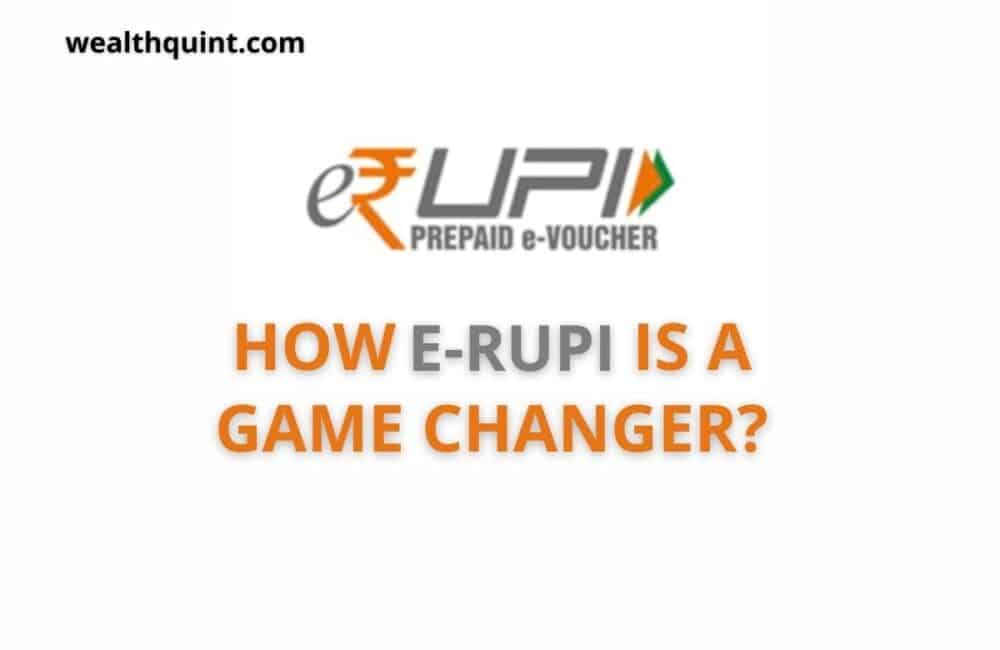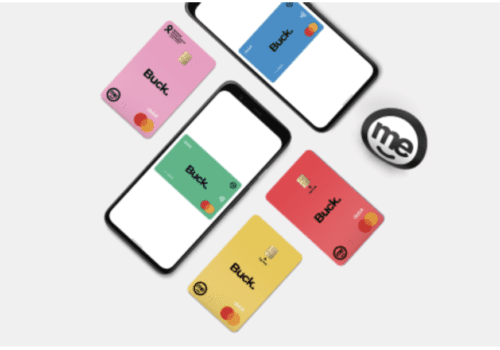PM Modi’s e-RUPI initiative stands apart from other recent moves by being game-changing in more ways than one. Through e-RUPI, the government intends to provide benefits more efficiently and ensure that these benefits reach the intended beneficiaries without leaking.
e-RUPI Overview
e-RUPI, introduced in August 2021 by Prime Minister Narendra Modi, is a new mode of cashless and contactless digital payment as part of his ambitious long-term plan to eliminate mediators and ensure Leak-Proof Direct Benefit Transfer (DBT) of welfare services.
As an e-RUPI, the beneficiary only needs a mobile phone to receive the virtual gift card, via which corporate and governmental agencies can share it via SMS and QR code. Contactless, easy, safe, and secure, the process keeps beneficiary information secure.
The end-to-end transaction process is relatively faster and more reliable because the voucher already contains a pre-blocked amount. It was developed through collaboration between the Department of Financial Services (DFS), Ministry of Health and Family Welfare (MoHFW), National Payments Corporation of India (NPCI), National Health Authority (NHA), and some partner banks.
Recommended: Old Money Vs New Money
Significance Of Direct Bank Transfer And UPI
Today, there are more than 43 crores of Jan Dhan accounts, ensuring that the poor and the underprivileged get government subsidies and benefits rightfully theirs without any theft. The Centre also pays cash to state governments to cover pensions, fertilizer subsidies, LPG subsidies now discontinued and other payments related to Covid. With the system of sending funds directly to recipients through Jan Dhan account, Aadhaar, and mobile (JAM trinity), bogus beneficiaries were easier to identify, and the government could prevent leakages in public funds. Averaging more than Rs 1.78 lakh crore, JAM has prevented over Rs 40,000 crore from falling into the hands of middlemen every single year.
The Direct Benefit Transfer program, which has transferred over Rs 17.5 lakh crore to beneficiaries in the last seven years under the Modi government, has been empowering in every sense of the word. It is evident that India’s digitization is transforming, setting new standards. On July 20, 2021, the unified payments interface (UPI) platform processed 324 crore transactions in volume and a staggering Rs 6.06 lakh crore worth of transactions. The increase is significant following the June 2021 transaction volume of 280 crores worth Rs 5.47 lakh crores. Recent statistics show that UPI processes 9-11 crore transactions every day.
Significance Of E-RUPI
It is expected that the e-RUPI introduction will highlight the shortcomings of the current digital payment infrastructure, a crucial step toward creating future digital currencies. In addition, shortly, the government will establish a Central Bank Digital Currency (CBDC).
e-RUPI Is A Game Changer
The e-RUPI initiative by PM Modi is more game-changing than any other move the government has taken in recent years. The government expects that e-RUPI will improve the efficiency with which benefits are provided and ensure that beneficiaries receive benefits.
The e-RUPI system offers noncash and contactless payments. They are mobile vouchers based on QR codes or SMS chains sent to the beneficiary’s phone.
The eRUPI feature of Mudra Bank facilitates digital connections between service initiators and beneficiaries without physical interfaces. The service provider is also paid only after the transaction is complete. Moreover, the payment is prepaid, so the service provider does not have an intermediary. In addition to the e-RUPI single payment mechanism, users will have an alternative to using a debit card or digital wallet and access to online banking. A UPI platform was developed by the National Payments Corporation of India (NPCI) together with the Ministry of Financial Services, the Ministry of Health and Family Welfare, and the National Health Service as part of the e-RUPI platform.
An extreme measure, the e-RUPI, will ensure people have access to welfare services without leaking funds. Additionally, Medicaid can be used for maternity and child care, tuberculosis prevention and eradication, the support plan for medicine and nutrition under the Medication and Diagnosis Plan, policies like Ayushman Bharat, fertilizer subsidies, and other welfare programs. There will soon be a website for e-RUPI launched by NPCI. e-RUPI will be the first digital currency in India, and only the National Payments Corporation of India will have the authority to control, circulate, and set up the framework for India’s very own digital currency, e-RUPI.
The best example of last-mile delivery is the use of technology to deliver cooking gas subsidies, ration money, and other social security schemes directly to beneficiaries’ bank accounts. The e-RUPI mechanism promotes leakage-free targeted delivery to ensure that appropriate aid reaches the needy by providing an e-voucher that both government and private entities can use. In addition to bringing transparency, the eRUPI voucher will assure that private funds are used for the purposes intended by the donors.
This quote from PM Modi, “We must ensure technology is affordable, accessible, and adds value”, describes perfectly what e-RUPI is, India’s very own digital currency, will entail.
What Are All Schemes Expected To Be Delivered Via E-RUPI?
e-RUPI is regarded as a revolutionary step for providing welfare services transparently. According to the government, voucher-based solutions can be leveraged for money transfer schemes and maternal and child welfare schemes, TB eradication programmes, Pradhan Mantri Jan Arogya Yojana, Ayushman Bharat, fertilizer subsidies, etc.
Will E-RUPI Be Limited To Government Welfare Schemes?
In addition to implementing the e-RUPI vouchers in the government’s schemes, it has also opened the opportunity for the private sector to leverage the platform. For their corporate social responsibility (CSR) programmes and schemes for employee welfare, various private organizations are being invited to use digital e-RUPI vouchers.
How Will E-RUPI Redefine The Delivery Of Welfare Money To Beneficiaries?
The e-RUPI digital payment solution limits physical contact and touchpoints in the service delivery process by bridging the gap between beneficiaries and sponsors. In addition, modern pandemic-driven times call for a digital approach to welfare schemes.
Vouchers for e-RUPI are prepaid. As long as the beneficiary completes the transaction at the end, the technology will ensure that no money is lost. There will be no need for cards, digital payment apps, or internet banking for beneficiaries.
Some of the banks that will participate in the scheme are the State Bank of India, Bank of Baroda, Axis Bank, ICICI Bank, Punjab National Bank, and HDFC Bank.
Frequently Asked Questions
Can E-RUPI Be Considered A Cryptocurrency?
e-RUPI is based on UPI systems, while cryptocurrency is based on blockchain. So essentially, it is like the online gift certificates we get, but this time it is the government releasing them.
How Does E-RUPI Work?
e-RUPIs are encoded QR codes or SMS numbers that the recipient receives on their cell phone. The transaction is then only paid to the service provider after it is complete.
What Is The E-RUPI App?
e-RUPI is a contactless, cashless voucher-based mode of payment that enables users to redeem the vouchers without using a credit card, digital payments app, or internet banking.
Does E-RUPI Voucher Require Debit/credit Cards Or Internet Banking To Use?
These vouchers do not require credit cards, debit cards, or internet banking to use.
Is A Bank Account Required To Use The E-RUPI Digital Payment System?
No, you do not need a bank account. e-RUPI vouchers can be redeemed without even having a bank account.



